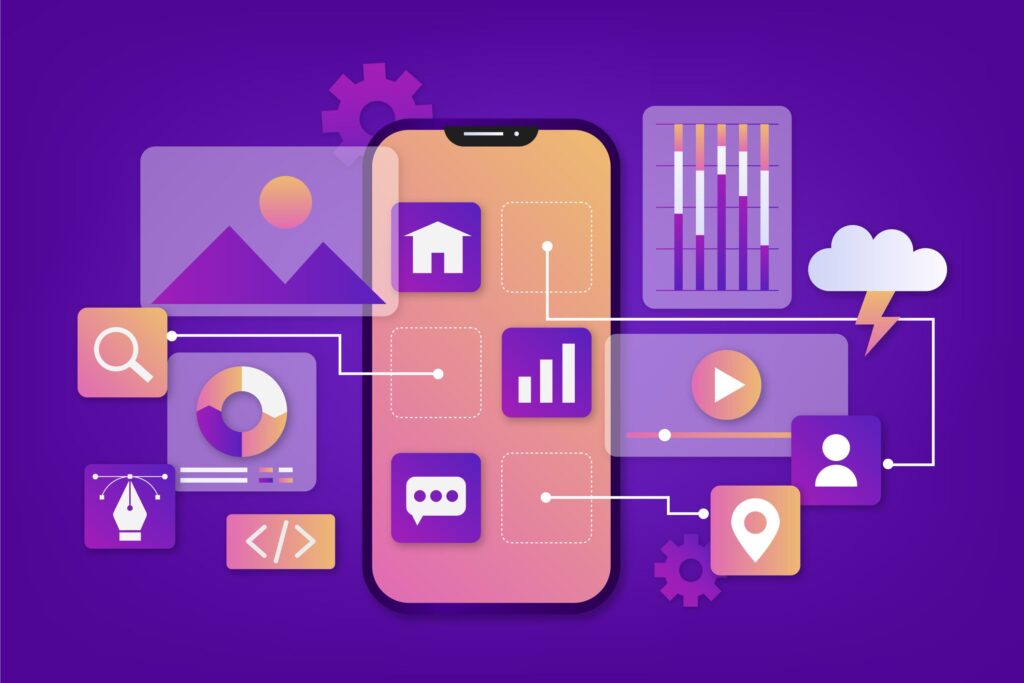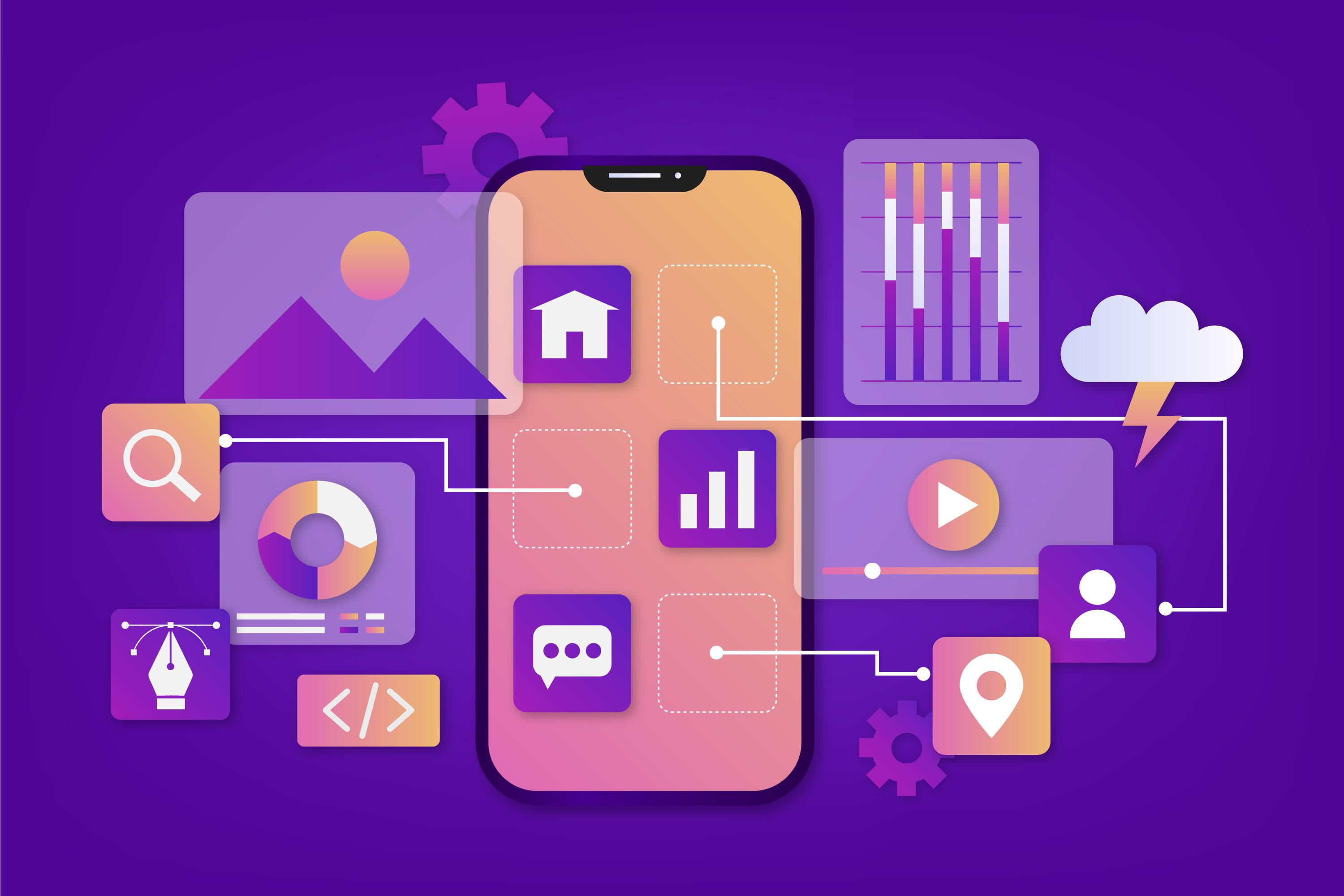In the ever-evolving realm of mobile technology, Android stands as a pioneer, driving innovation and setting trends that redefine the user experience. The Android App Revolution has become a dynamic force, transforming the way we interact with our devices and introducing groundbreaking innovations. In this comprehensive guide, we will delve into the current trends and innovations that are shaping the Android App Revolution, highlighting the developments that are influencing the future of mobile applications.

The Proliferation of Progressive Web Apps (PWAs)
As the demand for seamless and efficient web experiences grows, Progressive Web Apps (PWAs) have emerged as a significant trend within the Android App Revolution. PWAs offer a hybrid approach, combining the best features of traditional websites and mobile applications. These apps provide offline functionality, quick loading times, and a responsive design, blurring the lines between web and native applications.
PWAs eliminate the need for installation from an app store, enabling users to access the app directly through a web browser. This approach not only simplifies the user experience but also allows developers to roll out updates without relying on app store approvals. As a result, businesses and developers are increasingly adopting PWAs to deliver immersive and reliable experiences to a broader audience.
Rise of Augmented Reality (AR) Apps
Augmented Reality has transitioned from a futuristic concept to a mainstream trend within the Android App Revolution. AR apps leverage the capabilities of modern smartphones to overlay digital content onto the physical world, creating interactive and immersive experiences. From gaming applications that blend virtual and real-world elements to educational tools that bring history and science to life, AR is reshaping how we perceive and interact with our surroundings.
Major tech companies are investing heavily in AR development kits and frameworks, making it easier for developers to integrate augmented reality features into their Android applications. With AR becoming more accessible and user-friendly, we can anticipate a surge in innovative apps that harness the power of augmented reality for entertainment, education, and practical daily use.
Integration of Artificial Intelligence (AI) and Machine Learning (ML)
The Android App Revolution is witnessing a profound impact from the integration of Artificial Intelligence (AI) and Machine Learning (ML) technologies. AI and ML enable applications to learn and adapt to user behaviors, providing personalized and predictive experiences. From voice assistants like Google Assistant to recommendation algorithms in entertainment apps, AI is at the forefront of enhancing user engagement and satisfaction.
Developers are increasingly incorporating machine learning models into their apps to analyze user data, understand preferences, and deliver tailored content. This not only improves the overall user experience but also contributes to the efficiency and effectiveness of various applications. As AI and ML continue to advance, we can expect even more intelligent and context-aware Android apps that cater to the unique needs of individual users.
Revolutionizing User Interfaces with Gesture Navigation
Android’s shift towards gesture-based navigation is another prominent trend in the ongoing App Revolution. Gesture navigation replaces traditional on-screen buttons with intuitive gestures, providing a more immersive and streamlined interaction model. Users can navigate through their devices by swiping, pinching, and tapping, simplifying the overall user experience and maximizing screen real estate.
Gesture navigation not only aligns with modern design principles but also enhances the visual appeal of Android applications. Developers are embracing this trend to create apps that feel intuitive and responsive, catering to users who appreciate a more natural and gesture-driven approach to navigation.
Focus on Privacy and Security Features
In the wake of growing concerns about online privacy and data security, the Android App Revolution is placing a significant emphasis on integrating robust privacy and security features. With each Android version release, Google introduces enhanced security measures, and developers are following suit by implementing encryption, secure authentication methods, and strict permission controls within their apps.
Privacy-focused app features, such as end-to-end encryption in messaging apps and advanced permission settings, are becoming standard. Developers are also adopting privacy by design principles, ensuring that user data is handled responsibly and transparently. As users become more conscious of their digital footprint, the demand for apps that prioritize privacy and security will continue to rise.
Expanding Accessibility with Foldable Devices Support
The introduction of foldable devices has opened new avenues for Android app developers to create innovative and adaptable user interfaces. Foldable smartphones and tablets provide a dynamic form factor, allowing users to switch between compact and expansive screen layouts. This flexibility challenges developers to design apps that seamlessly transition between various screen sizes and orientations.
To stay ahead in the Android App Revolution, developers are optimizing their applications for foldable devices, taking advantage of multi-window capabilities and creating experiences that leverage the unique features of these devices. As foldable technology becomes more prevalent, we can expect an increasing number of apps that capitalize on the expanded screen real estate and versatility offered by these devices.
Facilitating Instant App Experiences
Instant Apps represent a paradigm shift in the Android App Revolution by allowing users to experience an app without the need for installation. Instant Apps provide a bite-sized, on-demand experience by allowing users to access specific functionalities without committing to a full app download. This approach is particularly beneficial for users with limited storage space or those seeking quick access to specific features.
The development of Instant Apps requires modularization, enabling users to access specific modules of an app without installing the entire package. This trend aligns with the broader industry push towards minimizing friction in user experiences, making it easier for users to explore and engage with apps on a whim.
The Continued Dominance of Subscription-Based Models
The Android App Revolution has seen a significant shift towards subscription-based business models, where users pay a recurring fee for access to premium features or content. Subscription models provide a reliable revenue stream for developers, fostering sustainability and ongoing support for app development.
Popular apps across various categories, including entertainment, productivity, and fitness, are adopting subscription models to unlock premium features, remove ads, and provide exclusive content. This approach not only benefits developers but also aligns with changing user expectations, where consumers are willing to pay for high-quality, ad-free experiences.
The Intersection of Gaming and Social Platforms
Gaming and social platforms are converging within the Android App Revolution, giving rise to a new era of social gaming experiences. Games are no longer isolated experiences but social hubs where players can connect, collaborate, and compete with friends and communities.
Social features, such as in-app chat, real-time multiplayer gaming, and the ability to share achievements, are becoming integral components of mobile games. This trend blurs the lines between traditional social media platforms and gaming apps, creating a dynamic ecosystem where social interactions and gaming seamlessly coexist.
Conclusion: Embracing the Future of Android Applications
The Android App Revolution is an ongoing journey marked by innovation, user-centric design, and the continuous evolution of technology. As we navigate the dynamic landscape of Android applications, the trends and innovations outlined in this guide provide a glimpse into the future of mobile technology.
Developers and users alike play crucial roles in shaping the Android App Revolution. Developers must stay abreast of emerging technologies, design principles, and user expectations to create apps that resonate with modern audiences. Users, on the other hand, have the opportunity to explore, adopt, and champion applications that align with their preferences and contribute to the ever-growing ecosystem of Android apps.
As we move forward, the Android App Revolution will undoubtedly bring forth new trends, technologies, and possibilities. Whether it’s the integration of cutting-edge technologies like augmented reality, the pursuit of more secure and private app experiences, or the seamless fusion of gaming and social platforms, the future of Android applications is poised to be both exciting and transformative.
In the spirit of the Android App Revolution, let’s embrace the innovation, celebrate the creativity of developers, and look forward to the next wave of groundbreaking apps that will shape the way we engage with our digital world. The journey continues, and the possibilities are limitless in the dynamic and ever-evolving landscape of Android applications.
Related Articles:
1. Top 10 Android Mobile App Development Trends 2023
2. The Future Of Mobile App Development – Trends To Watch …
3. Top 13 New Android App Development Trends for 2023




